
Un mot de l’équipe de renseignement de lUptime Institute
Ci-dessous, nous résumons nos principaux rapports de recherche à partir de 2022 sur des sujets tels que la durabilité de l’infrastructure numérique, la menace des impulsions électromagnétiques et l’effet du cloud sur les émissions de carbone, en partageant les informations de notre équipe d’experts mondiaux de l’industrie Uptime Intelligence pour mettre en évidence les résultats clés de l’année passée et présenter un aperçu de 2023 et au-delà.
- Andy Lawrence, Directeur exécutif, Uptime Institute Intelligence
Récapitulatif de la recherche Uptime Institute 2022
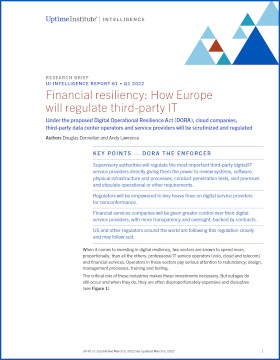
Résilience financière : Comment l’Europe réglementera-t-elle l’informatique tierce ?
Lorsqu’il s’agit d’investir dans la résilience numérique, deux secteurs sont connus pour dépenser plus, proportionnellement, que tous les autres : les opérateurs de services informatiques professionnels et les services financiers.
Ce rapport examinera les éléments clés et les impacts attendus de la loi sur la résilience opérationnelle numérique (DORA) de l’Union européenne, qui devrait être adoptée en 2022, après quoi les États membres de l’UE auront un an pour se conformer à la législation.
Liens de téléchargement :
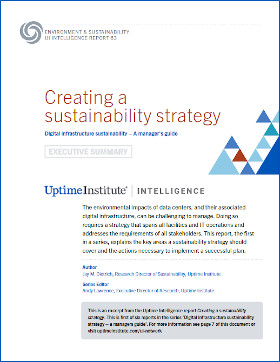
Créer une stratégie de développement durable
Les lecteurs de ce rapport découvriront les éléments clés à inclure dans une stratégie de développement durable, les actions nécessaires à une mise en œuvre réussie et les processus requis pour mesurer les progrès par rapport aux buts et objectifs.
Liens de téléchargement :
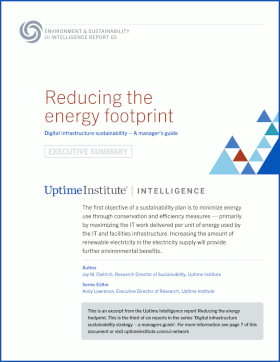
Réduire l’empreinte énergétique
Le premier objectif d’un plan de développement durable est de minimiser la consommation d’énergie grâce à des mesures de conservation et d’efficacité, principalement en maximisant le travail informatique fourni par unité d’énergie utilisée par l’infrastructure informatique et des installations.
Ce rapport se concentre sur les meilleures pratiques en matière de suivi de l’efficacité des installations et des technologies de l’information, de construction d’un cadre de mesure et de reporting pour la consommation d’énergie et d’augmentation de la quantité d’électricité renouvelable dans l’approvisionnement en électricité afin d’obtenir d’autres avantages environnementaux.
Liens de téléchargement :
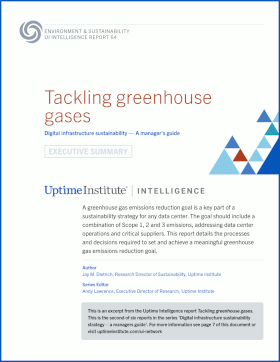
Lutter contre les gaz à effet de serre
Un plan de réduction des émissions de GES des datacenters doit optimiser et minimiser la consommation d’énergie et se concentrer sur l’approvisionnement en énergie renouvelable ou zéro émission pour alimenter le datacenter. Le soutien de la direction en matière de personnel et de ressources pour exécuter le plan est essentiel.
Ce rapport se concentre surles opérations de datacenters détenus, y compris les opérations d’entreprise, de colocation et de cloud (Scope 1 et 2), les opérations informatiques dans les datacenters de colocation (Scope 2 et 3) et les charges de travail informatiques exécutées dans les installations de cloud public (Scope 3).
Liens de téléchargement :
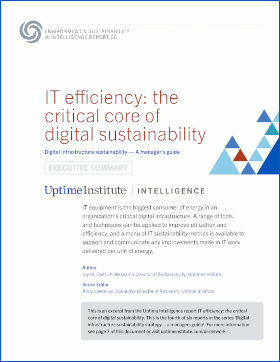
Efficacité informatique : Le cœur essentiel de la durabilité numérique
Liens de téléchargement :
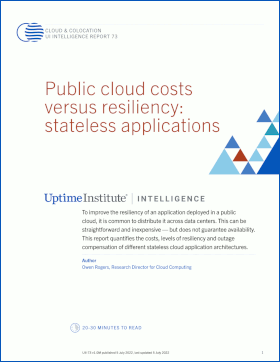
Coûts du cloud public par rapport à la résilience : Applications sans état
Ce rapport quantifie les coûts de plusieurs architectures communes pour renforcer la résilience d’une application cloud sans état et détermine le niveau de protection et de compensation pour chaque application.
Liens de téléchargement :
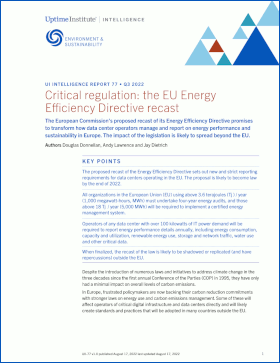
Régulation critique : la refonte de la Directive européenne sur l’efficacité énergétique
Malgré l’introduction de nombreuses lois et initiatives visant à lutter contre le changement climatique au cours destrois décennies qui ont suivi la première Conférence annuelle des Parties (COP) en 1995, elles n’ont eu qu’un impact minimal sur les niveaux globaux d’émissions de carbone.
En Europe, les décideurs frustrés soutiennent désormais leurs engagements en matière de réduction des émissions de carbone avec des lois plus strictes sur la consommation d’énergie et la gestion des émissions de carbone. Certains d’entre euxaffecteront directement les opérateurs d’infrastructures numériques et de centres de données critiques et créeront probablement des normes et des pratiques qui seront adoptées dans de nombreux pays en dehors de l’UE.
La proposition de refonte de sa directive sur l'efficacité énergétique de la Commission européenne promet de transformer la façon dont les opérateurs de datacenters gèrent et rendent compte des performances énergétiques et de la durabilité en Europe. L’impact de la législation est susceptible de se propager au-delà de l’UE.
Liens de téléchargement :
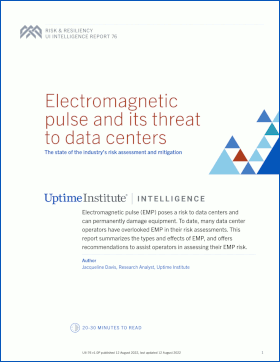
Impulsion électromagnétique et menace pour les datacenters
Ce rapport résume les types et les effets de l’EMP et propose des recommandations pour aider les opérateurs à évaluer leur risque d’EMP afin qu’ils puissent mettre en œuvre une protection appropriée.
Liens de téléchargement :
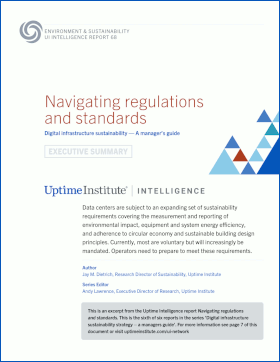
Durabilité de l’infrastructure numérique : Navigation dans les réglementations et les normes
Les investisseurs et les clients utiliseront de plus en plus ces normes pour prendre des décisions d’investissement et d’achat. Les législateurs et les régulateurs les utiliseront comme base des mandats régissant la durabilité des opérations et des rapports périodiques sur la durabilité. Au cours de la prochaine décennie, tout opérateur espérant prospérer sur le marché des services de datacenter devra répondre aux exigences de bon nombre de ces normes.
Liens de téléchargement :
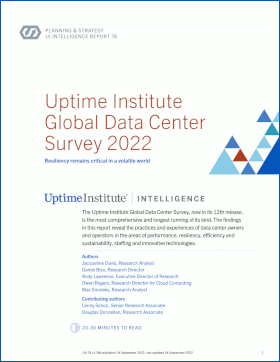
Résultats de l’enquête mondiale sur les centres de données de l’Uptime Institute 2022
Liens de téléchargement :
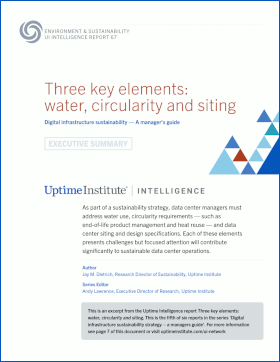
Trois éléments clés du développement durable : Eau, circularité et emplacement
Les stratégies de gestion de l'eau sont dictées par le ou les système(s) de refroidissement du datacenter ; les responsables doivent minimiser la consommation d'eau. Les considérations de circularité comprennent le recyclage et la réutilisation des produits en fin de vie, l’utilisation de matériaux recyclés et la récupération de chaleur. L’implantation et la conception d’un nouveau datacenter et/ou la sélection d’une installation de colocation ou de cloud fixent les limites de la stratégie de durabilité pour tous les services informatiques associés.
Liens de téléchargement :
Vague de chaleur au silicium : Le changement imminent des climats des datacenters
Cependant, ce modèle bien établi a changé. Une actualisation technologique au début des années 2020 a entraîné une augmentation marquée de la puissance pour la nouvelle génération de serveurs hautement performants et efficaces qui sont la base de nombreuses infrastructures informatiques.
Dans ce rapport, nous explorons les facteurs à l’origine de ce changement, ainsi que les implications et les options pour les concepteurs et les opérateurs de datacenters.
Liens de téléchargement :
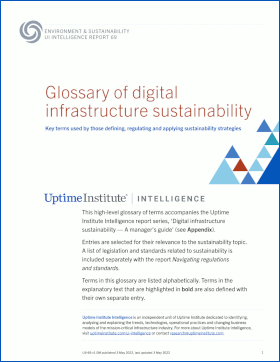
Glossaire de la durabilité des infrastructures numériques
Un résumé de chaque rapport de la série estdisponible gratuitement sur notre site Web, tandis que les membres de l’Uptime Institute peuvent accéder aux versions complètes de chaque rapport dansInside Track.
Liens de téléchargement :
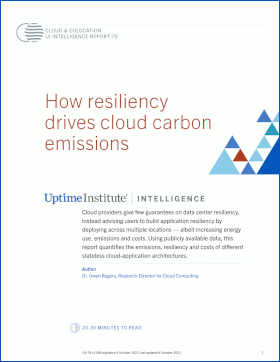
Comment la résilience stimule les émissions de carbone dans le cloud
Liens de téléchargement :
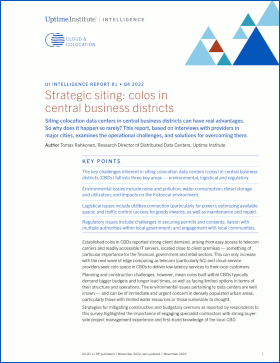
Emplacement stratégique : Colos dans les quartiers d’affaires centraux
Liens de téléchargement :
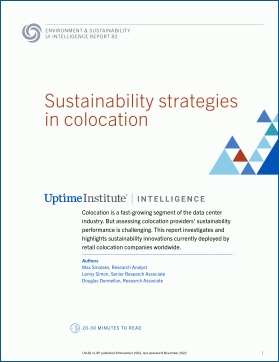
Stratégies de durabilité en colocation
Liens de téléchargement :
Adhérer à Uptime Institute
Uptime Institute accueille les propriétaires et les exploitants d’infrastructures numériques pour nous rejoindre en tant qu’invités lors d’un prochain événement d’adhésion.
Pour demander l’accès invité, rendez-vous sur la page Adhésion Uptime Institute sur notre site Web et remplissez le « Formulaire de participation en tant qu’invité » pour commencer !
